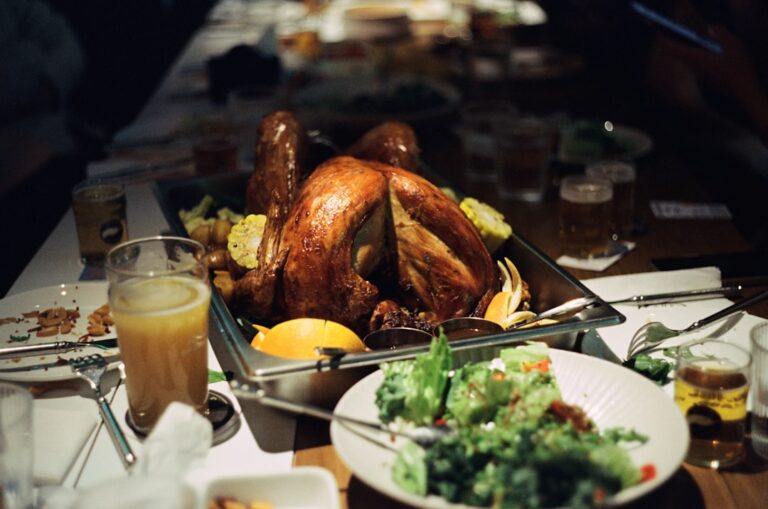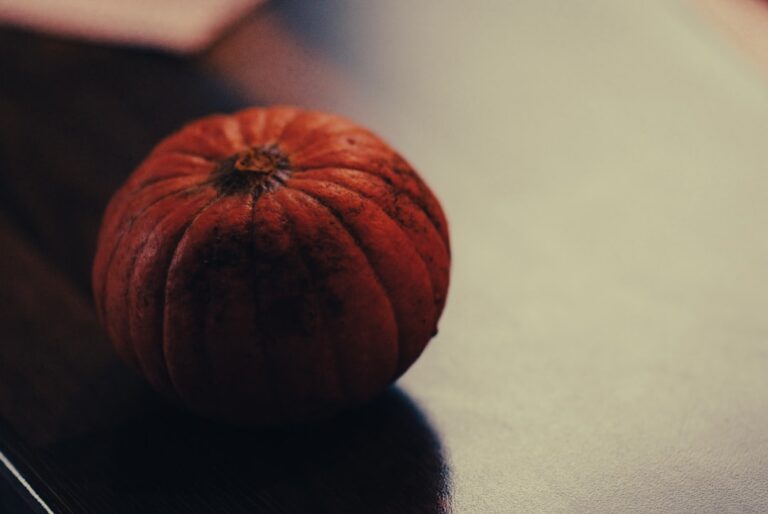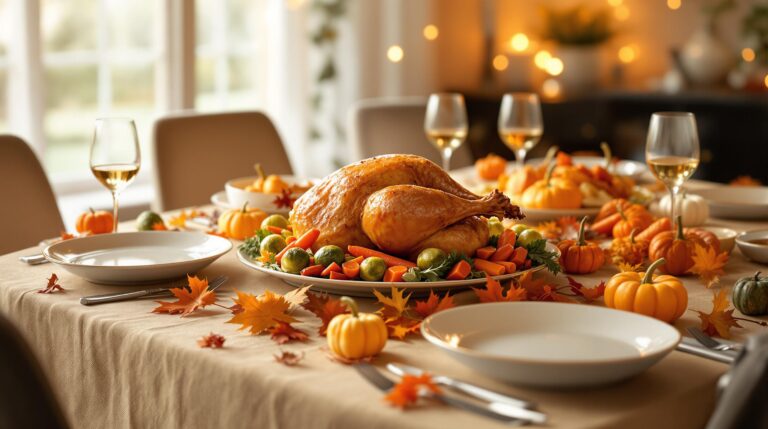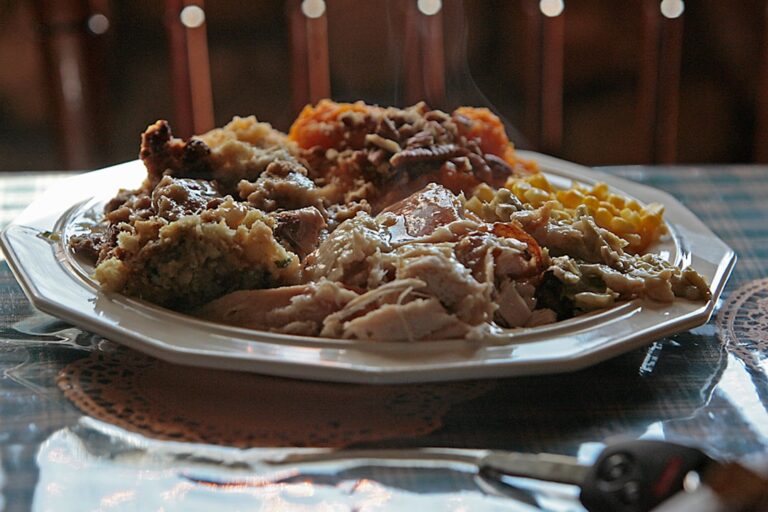Thanksgiving Trivia: An In-Depth Look at the Holiday’s Diverse Tapestry Thanksgiving is a beloved holiday that is observed in many different ways around the world, but its origins are deeply ingrained in community, culture, and history. You will be taken on a journey through the history of Thanksgiving, including its beginnings, Native American cultural contributions, early settlers’ influences, & its evolution over time. Also, we will look at its cultural significance, variations around the world, and ways to celebrate Thanksgiving with diversity. Need Weekly Trivia Questions? https://cheaptrivia.com/products/weekly-trivia-subscription-service
Key Takeaways
- Thanksgiving originated from a mix of European and Native American traditions, and has evolved over time to become a widely celebrated holiday in the United States.
- Native American contributions to Thanksgiving include the sharing of agricultural knowledge, traditional foods, and cultural practices that have influenced the holiday’s traditions.
- Early settlers brought their own customs and foods to the Thanksgiving table, shaping the holiday into what it is today.
- Thanksgiving has evolved from a harvest festival to a modern celebration that includes traditional foods, music, and dance.
- Thanksgiving is a culturally significant holiday that emphasizes the role of food, music, and dance in bringing people together to give thanks.
Thanksgiving has its roots in the early harvest festivals observed by many cultures worldwide. The most well-known event in North America is the feast that the Pilgrims and the Wampanoag tribe shared in 1621. This meal was only one aspect of the celebration; it also represented gratitude and collaboration between two very different cultures. Following a difficult first year in the New World, the Pilgrims, who had returned to Plymouth, Massachusetts, were grateful for a plentiful harvest.
But Thanksgiving did not develop into what it is today overnight. The holiday did not become popular in American culture for decades. Thanksgiving became a national holiday in 1863 when President Abraham Lincoln declared the final Thursday of November to be a day of thanks. Thanksgiving’s status in American culture was cemented by this official acknowledgement, which turned the holiday from a local celebration into a national custom.
Thanksgiving cannot be fully appreciated unless Native American cultures are acknowledged for their contributions. During the Pilgrims’ first winter in America, the Wampanoag people were essential to their survival. They imparted to the settlers essential farming skills, including the “Three Sisters”—planting corn, beans, and squash. In addition to providing the Pilgrims with sustenance, this knowledge established the foundation for American agriculture in the future.
Also, Native American customs are the origin of many Thanksgiving traditions. Indigenous cultures have a strong tradition of expressing gratitude for a bountiful harvest. Many tribes honored the earth and its abundance through rituals long before European settlers did. Recognizing these contributions can help people appreciate Indigenous cultures and develop a deeper understanding of Thanksgiving’s significance. Thanksgiving was observed differently because of the different European customs that the early settlers brought with them. For example, feasting and social gatherings to express gratitude for a bountiful crop yield were common features of English harvest festivals.
Native American traditions were combined with these customs to produce a distinctive celebration that honored both cultures. Regional Thanksgiving customs started to appear as more people moved to America. For instance, Thanksgiving evolved into a period of prayer and introspection in New England, while Southern states added aspects of their own culinary customs.
Thanksgiving celebrations today are a rich tapestry of customs that were woven together by this blending. Thanksgiving has changed dramatically over the ages from its modest origins as a harvest celebration. One significant change is the addition of turkey as the main course; it is thought that wild turkeys were common in North America and were thus chosen for feasting. In the United States, turkey has become a staple of Thanksgiving meals. These days, Thanksgiving celebrations frequently involve parades, football games, and family get-togethers in addition to food. With its elaborate floats and performances, the Macy’s Thanksgiving Day Parade in New York City has grown to become a legendary event that attracts millions of spectators every year.
These modern customs demonstrate how Thanksgiving has evolved to accommodate contemporary culture while maintaining its historical significance. Thanksgiving celebrations revolve around food as a means of communication and expression of thanks. Family gatherings around the dinner table are fostered by traditional foods like pumpkin pie, cranberry sauce, and stuffing.
Regional flavors and family customs are reflected in each dish, which frequently has a backstory and meaning. During Thanksgiving celebrations, dance & music are also culturally significant. Many families use songs that tell tales from their heritage or express gratitude. Some cultures celebrate this joyous occasion by honoring their ancestors or by performing traditional dances. By embracing these components, you can make enduring memories and enhance your own Thanksgiving experience.
Although Thanksgiving is largely connected to American culture, similar holidays that highlight thankfulness & harvest are observed in many other nations. For example, Canada celebrates Thanksgiving on the second Monday in October, following customs that are very similar to those in the United States. S.
including meals and get-togethers with family. Kinrō Kansha no Hi, or Labor Thanksgiving Day, is observed on November 23rd in Japan as a way to honor laborers and express gratitude for the harvest. Similar to this, church services and festive meals showcasing in-season produce are part of Germany’s Erntedankfest (Harvest Festival), which is celebrated in September or October. You may find new inspiration for your own Thanksgiving celebration by looking into these regional variations.
Your Thanksgiving celebration can be enhanced and inclusivity promoted by incorporating various cultural customs. Having family members or friends from various backgrounds join you for the meal and share their culinary customs is one way to accomplish this. Dishes from different cultures may make a wonderful addition to traditional Thanksgiving fare. Think about including traditional dance or music in your celebrations as well.
You could put together a little show that includes traditional dances or even make a playlist with songs from various cultures. In addition to honoring various heritages, embracing diversity in your celebration fosters an atmosphere that promotes appreciation and understanding among attendees. Consider holding a Heritage Night themed event if you want to make Thanksgiving celebrations even more memorable. This can entail picking a particular culture or area to emphasize annually. For instance, one year you might study Mexican customs, and the following year you might concentrate on Italian traditions.
Invite guests to bring dishes that reflect their heritage or to dress traditionally. You may also incorporate exercises like storytelling sessions in which participants narrate stories from their cultural heritage or trivia contests that assess participants’ understanding of various Thanksgiving-related traditions. This interactive method not only creates a fun evening but also helps attendees connect with one another. Teaching kids about Thanksgiving’s many cultural facets can be entertaining and instructive.
A fun exercise is to make a trivia game that highlights different cultural customs related to the holiday. Questions concerning historical occurrences, regional cuisine, or distinctive traditions that families follow during festivities can all be included. Organizing craft sessions where kids can make decorations based on harvest festivals from various cultures is another idea. They could, for example, create banners with symbols from different traditions or cornucopias full of paper fruits.
Early appreciation of cultural diversity is also fostered by these activities, in addition to encouraging creativity. Building relationships between various cultural groups can be facilitated by promoting community participation in your Thanksgiving festivities. Working with neighborhood groups that represent different communities is one way to achieve this. A potluck-style gathering could be organized, where attendees bring food from their cultural backgrounds to share with one another.
Also, during this season, think about hosting talks or workshops that center on cross-cultural exchange. Ask speakers with a range of backgrounds to talk about their experiences with harvest celebrations and gratitude. You can foster understanding between various groups and improve community ties by establishing an inclusive atmosphere where everyone is encouraged to participate. Thanksgiving is fundamentally about unity, introspection, and thankfulness—values that cut across all cultures. Though customs may vary, the fundamental idea is always the same: everyone should take the time to be grateful for what they have and the people they spend their lives with.
Spend some time thinking about these universal principles and how they bind us all together as you celebrate this holiday season. Everyone can have a more fulfilling experience when diversity is celebrated while respecting shared values, whether it be through cuisine, music, or storytelling. In summary, Thanksgiving is a time to honor various cultures, learn about history, and celebrate human unity in addition to being a day for feasting. Creating a welcoming atmosphere & integrating different customs into your festivities will help you make enduring memories that capture the essence of this well-loved holiday.
If you’re looking for more Thanksgiving trivia to incorporate into your Heritage Nights, check out this Thanksgiving Quiz Multiple Choice Challenge article. It offers a fun and interactive way to engage your guests with easy-to-use trivia questions. You can also learn about Thanksgiving health facts in the article 8 Things to Remember This Holiday Season and discover 10 interesting facts about Thanksgiving that you may not have known in the article 10 Interesting Facts About Thanksgiving You Didn’t Know.
GRAB YOUR FREE HOLIDAY TRIVIA PACKS
FAQs
What is the significance of Thanksgiving in American culture?
Thanksgiving is a national holiday in the United States, celebrated on the fourth Thursday of November. It originated as a harvest festival and is now a time for families and friends to gather and give thanks for the blessings of the past year.
What are some common traditions associated with Thanksgiving?
Common traditions associated with Thanksgiving include sharing a meal with family and friends, often featuring turkey, stuffing, cranberry sauce, and pumpkin pie. Many people also watch parades and football games on Thanksgiving Day.
How do different cultures celebrate Thanksgiving?
Different cultures in the United States may celebrate Thanksgiving in their own unique ways, incorporating their own traditional foods, customs, and rituals into the holiday. For example, Native American communities may hold ceremonies to honor their heritage and give thanks for the harvest.
What are some cultural themes for Heritage Nights related to Thanksgiving?
Some cultural themes for Heritage Nights related to Thanksgiving could include exploring the history and traditions of Native American tribes, learning about the contributions of different immigrant groups to the Thanksgiving holiday, and celebrating the diversity of cultural expressions of gratitude and harvest festivals around the world.
How can schools and organizations incorporate cultural Thanksgiving trivia into Heritage Nights?
Schools and organizations can incorporate cultural Thanksgiving trivia into Heritage Nights by hosting educational activities, such as trivia games, storytelling sessions, and cultural performances that highlight the diverse traditions and histories associated with Thanksgiving. This can help promote understanding and appreciation of different cultural perspectives on the holiday.






